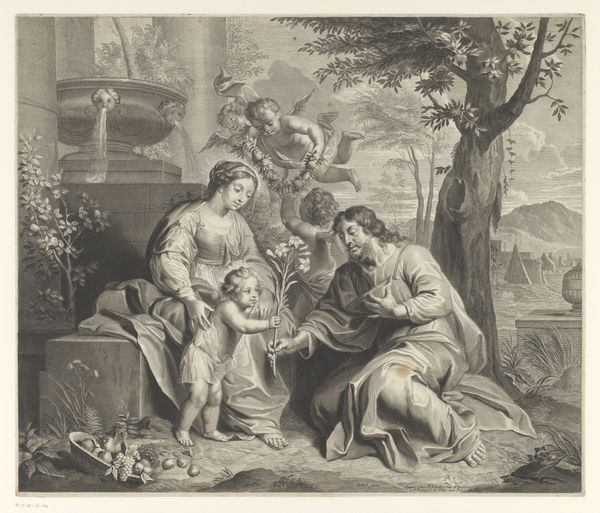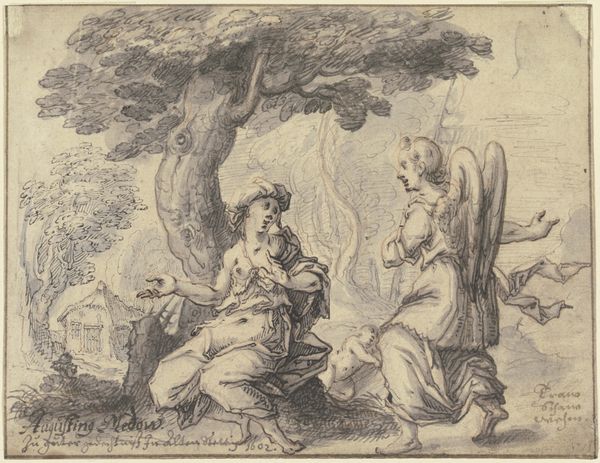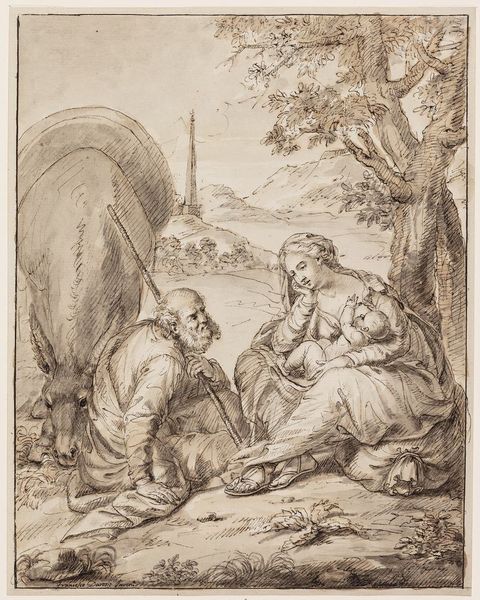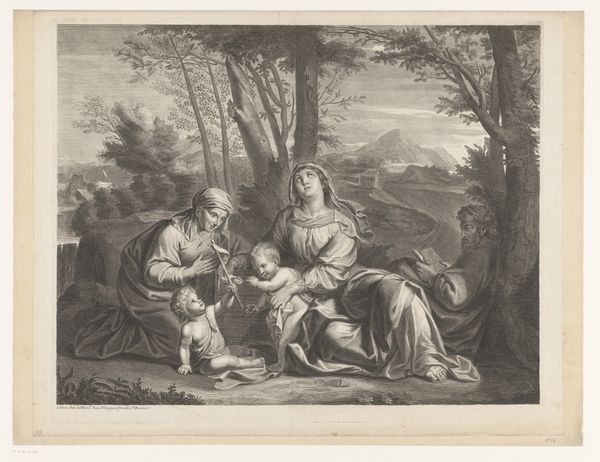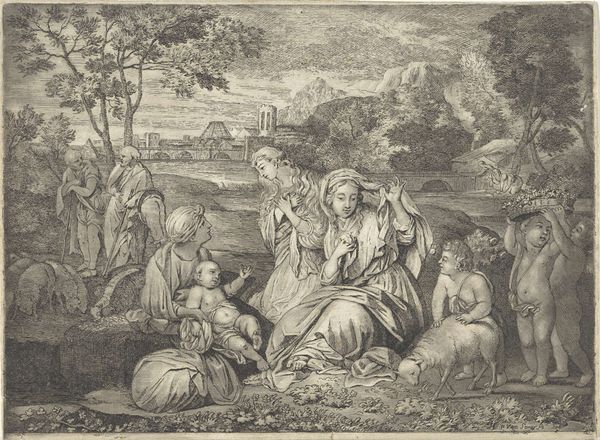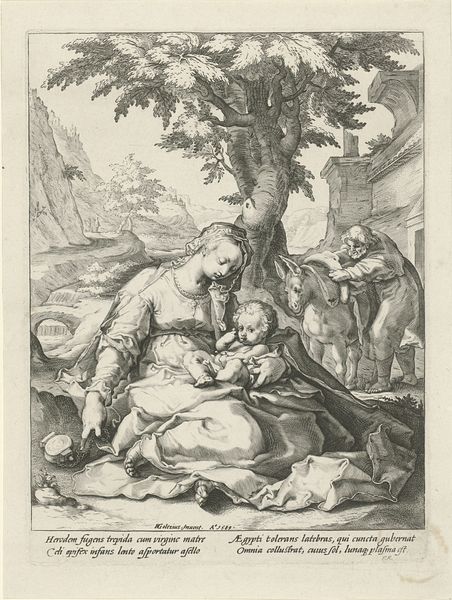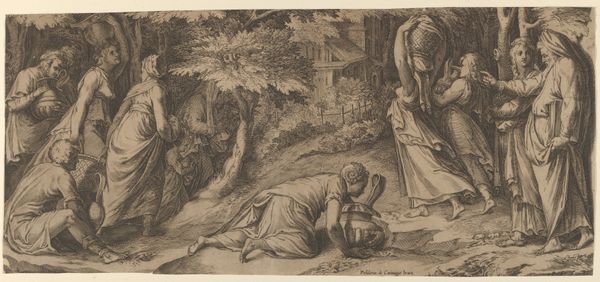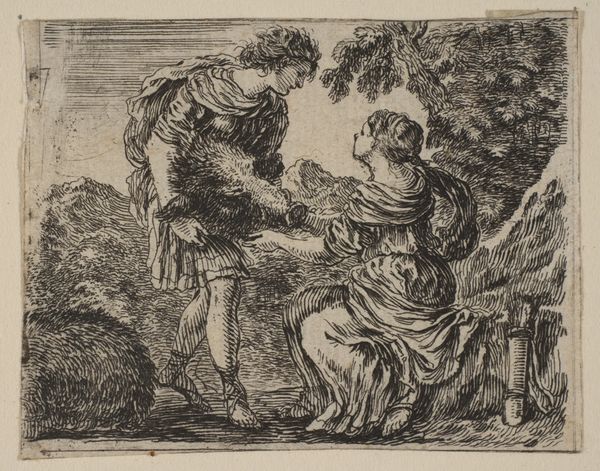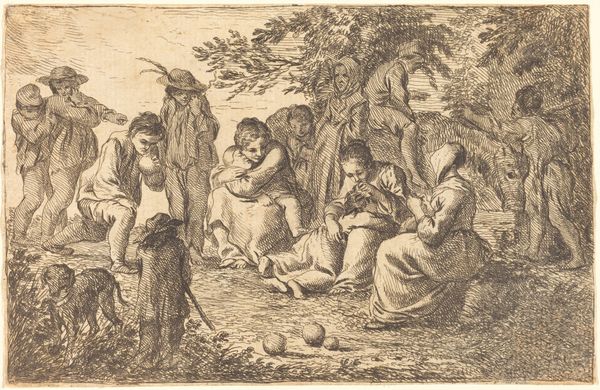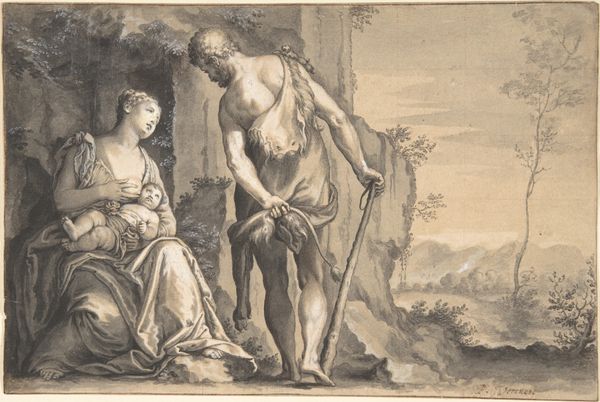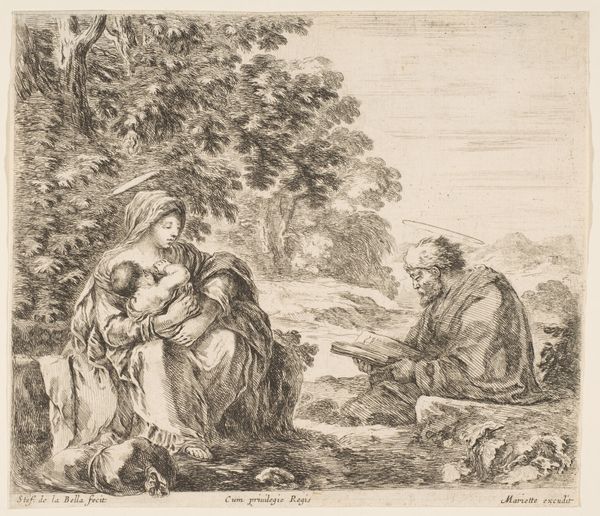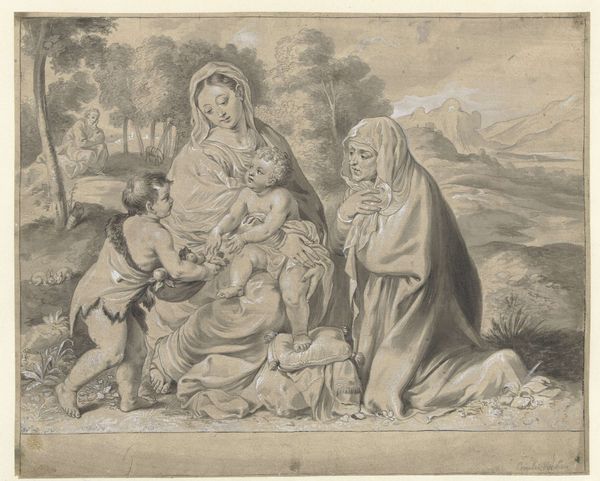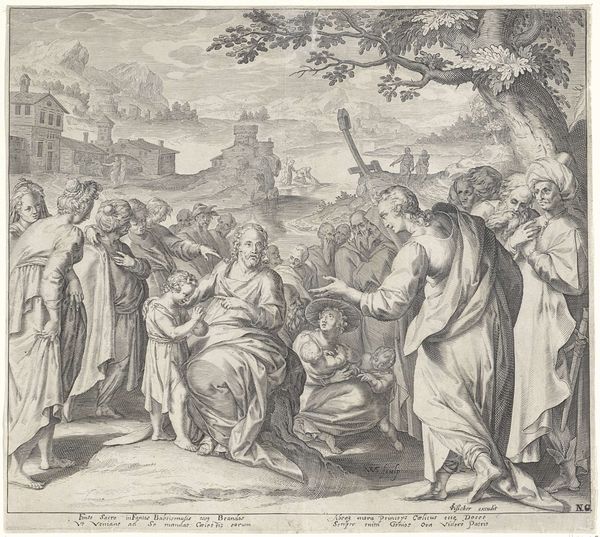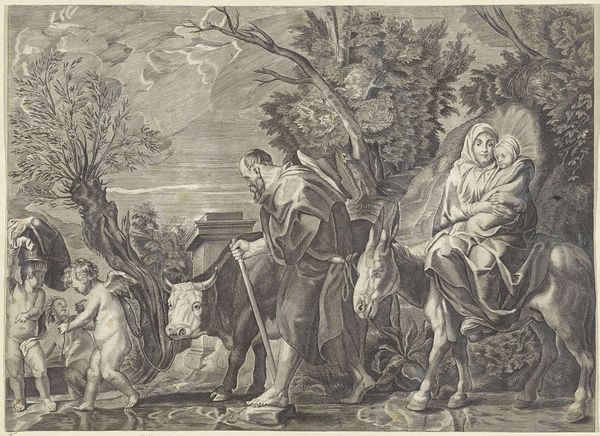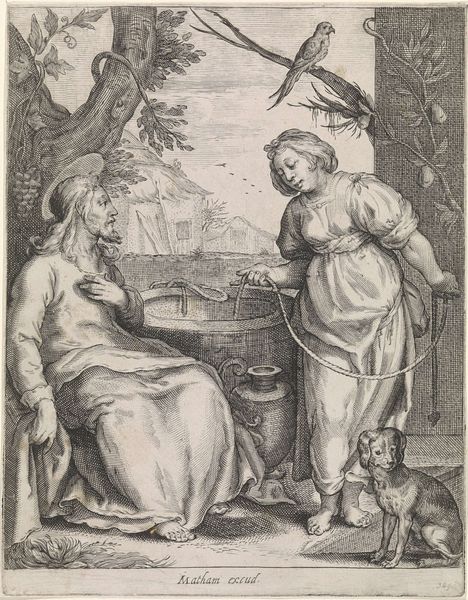
painting, oil-paint
#
allegory
#
baroque
#
painting
#
oil-paint
#
landscape
#
figuration
#
oil painting
#
genre-painting
#
history-painting
Dimensions: support height 21.4 cm, support width 29.4 cm, depth 2.5 cm
Copyright: Rijks Museum: Open Domain
Editor: Here we have Jan Tengnagel's "Vertumnus and Pomona" from 1617, rendered in oil on what looks like a wooden panel. I’m immediately drawn to the almost mundane depiction of figures from classical mythology; it feels as though we’ve stumbled upon them during a coffee break. How would you interpret this piece? Curator: It's interesting you see it that way. Look closer, though. To me, it reads less about mythology and more about the modes of artistic production available to Tengnagel. We see oil paint, certainly a precious commodity at the time, meticulously applied, striving for an illusion of pastoral ease. Yet, the presence of the figures, and particularly their clothing, draws attention to the costuming as another material involved in crafting narrative. Editor: So, are you suggesting the story itself, the allegory, is less relevant than, say, the types of pigment Tengnagel chose? Curator: Exactly! The pigment itself held material and social value. Sourcing it, grinding it, and even applying it speaks to labor practices, the patronage system, and the commodification of artistic skill in 17th-century Holland. Do you see the tools surrounding Pomona? Editor: Yes, a shovel, a rake...are you saying these implements of labor were purposefully placed in the composition? Curator: Absolutely. It is not merely setting. It's a deliberate reference to labor, value and production processes embedded in both artistic creation and Pomona’s horticultural role. Consider this through a wider socioeconomic lens: it prompts reflection on artistic craftsmanship versus agricultural production in a burgeoning mercantile economy. Editor: That shifts my perspective considerably. The materiality really brings it into focus. I'm now looking at it as a record of labour, class and artistry intertwined. Thanks! Curator: Precisely. Reflecting on the materials reframes our understanding of artistic meaning in society, moving beyond traditional notions of subject matter and artistic genius.
Comments
rijksmuseum about 2 years ago
⋮
Ovid’s tales about metamorphoses were wildly popular. This painting depicts the story of Vertumnus, god of the seasons, who was madly in love with Pomona, goddess of gardens, who was interested solely in gardening. Disguised as a wise, old woman, Vertumnus praised his own virtues, and won Pomona’s heart with the following metaphor: just as the vine relies on the support of the elm, so everyone requires a mate.
Join the conversation
Join millions of artists and users on Artera today and experience the ultimate creative platform.
